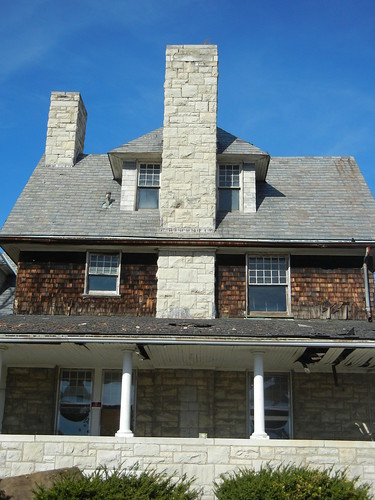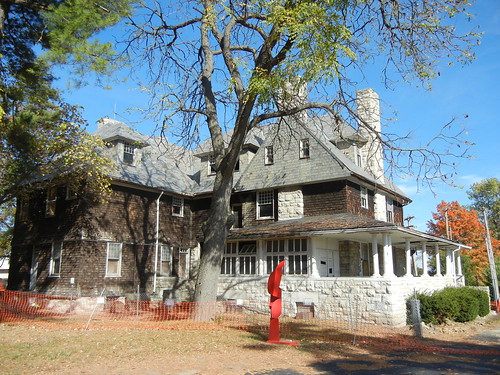by Michael R. Allen

Last week, St. John Vianney High School demolished the venerable Brownhurst mansion in Kirkwood. The demolition was no surprise, given that the Marianists had set September 9 as the date for a “serious†buyer who would relocate the large house. The terms of the order were not met, although there was a chance for preservation more serious than anyone expected.
Although Brownhurst had sat vacant for 22 years on the Vianney campus, suffering neglect, and although the Marianists pushed a rather difficult demand that any buyer relocate the house, an anonymous philanthropist stepped forward. This person would have given $2 million toward renovation of Brownhurst as a non-profit incubator — a gift that seemed to reconcile the Marianists’ concern that there was no feasible or fundable reuse of the house and the Kirkwood Landmarks Commission’s steadfast efforts to save Brownhurst.
Yet the Marianists rebuffed the offer, and set Brownhurst on a path toward demolition. The Shingle Style house, built in 1890 for Daniel Sidney Brown, is now just a memory to its generations of admirers. Even to the very end, the house showed that demolition was a wasteful and willful act – the solid stone masonry, intact original shingles, porch columns and sash and countless bits of the graceful character of the mansion were defiant reminders of the solid beauty in our midst.
Brownhurst’s architect remains a mystery, according to architectural historian Matthew Bivens, whose research on the house has been extensive. Those who have destroyed the house, on the other hand, are well-known. While their actions are reasonable within the framework of maintenance of the private school campus, the underlying framework deserves scrutiny.
Vianney’s mission is education, not expansion and preservation of protected land. Yet its stewards have placed their real estate ahead of their mission and stewardship of the larger values of their society. Brownhurst was a work of architecture that was of value not just to Kirkwood but to the region. Upon purchase, Vianney ought to have embarked upon a plan to either do right through ownership, or to find a party that could.
Instead, the school invested in the rest of its campus, and let a local landmark decay to a severe point. Then, at the eleventh hour, the school cast aside a generous and impressive offer to allow the community to maintain Brownhurst. Here the school’s mission – education, which includes imparting the traditions of art and history – would suggest that preservation was more important than concerns about the “campus.†After all, a campus is just malleable land, while a beautiful building is a tangible and visible reminder of the potential of the human mind.
Alas, in this day and age, educational institutions seem more intent on amassing and protecting real estate than in ensuring that their missions are enjoined to the values of their communities. Whether Brownhurst “served” Vianney would have been a decent question had Brownhurst been a pole barn, but given the house’s historic and architectural pedigree, utility ought to have been only a secondary consideration. If our region’s institutions subsume great architecture to the myopic logic of use, the preservationist’s task is clear: preventing these works from ever being owned by institutions who judge commitment to community, culture and heritage by the crude standard of momentary utility.



